|
Oil Painting Technique #4 Drybrush
Please follow my drybrush oil painting instruction carefully and you will be painting like a pro before you know it. Areas of drybrush are energetic and stare right out at the observer. The surface of canvas is textured so it captures paint and displays it unevenly. I advise you use hog's hair brushes if possible for this exercise. Please follow my example. Using my reference drawings as a guide I sketch the shape of a tree loosely with a hard pencil. I am using a mix of emerald, dark blue and a touch of ivory black. No thinner whatsoever. Apply the paint rapidly-don't hold back on your hand pressure. Scrub it on the canvas in any desired direction. This is the darkest part of the painting. 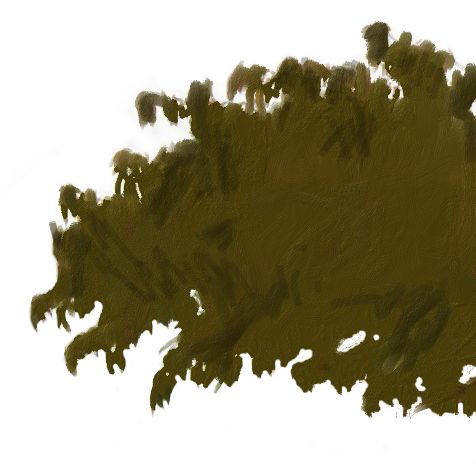
The next darkest colours are brown and red. I apply them over the partially dry green layer. The colours are mixing where the paint is thinnest making interesting changes without any effort on my part. 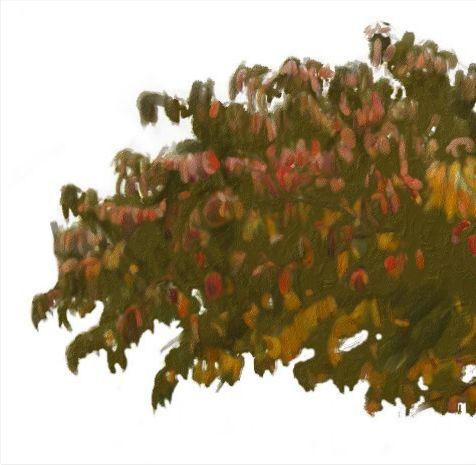
Now I move onto orange and yellow. 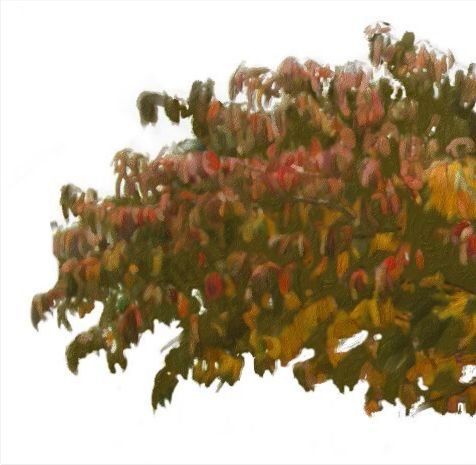
I continue refining the leaf shapes with orange and yellow and add touches of gray to suggest thinner foliage and map out branches. Let the paint dry thoroughly. 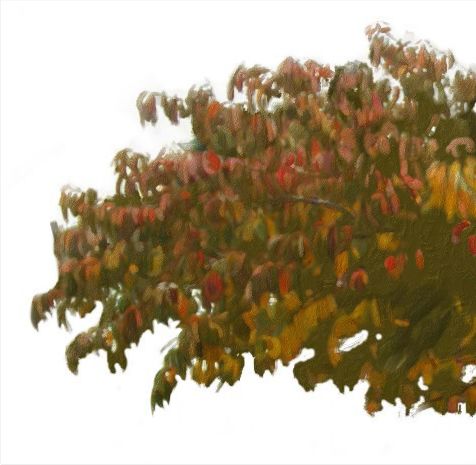
Finally, I add the lightest tones which are weaker versions of the colours already applied. I make sure parts of the branches are showing in browns greens and greys. 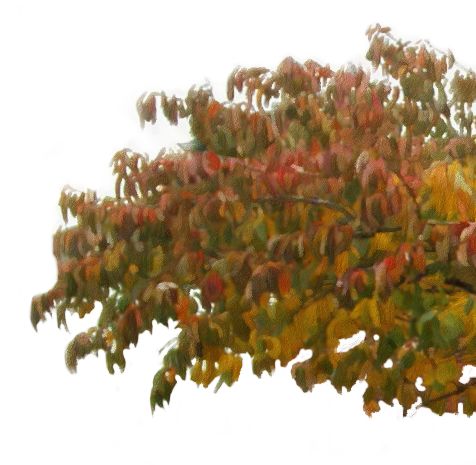
The result is a tree that looks solid and in the early stages of autumn. Our eyes lose detail over distance and that is why we see this mass of swirls and dabs as a tree. Get the colours right by observing your subject closely and, using this technique, you will create very realistic scenes. 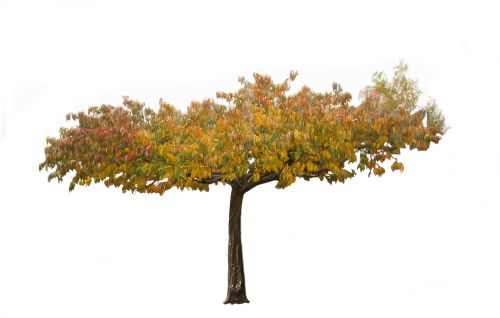
Home Return to Oil Painting Techniques
|





